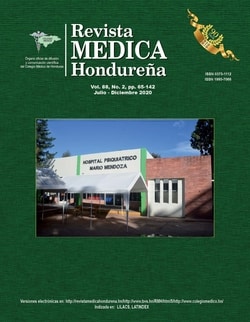Architectural barriers in healthcare buildings contribute to disabilities in Honduras
DOI:
https://doi.org/10.5377/rmh.v88i2.11486Keywords:
Architectural accessibility, Coronavirus infections, Health services accessibility, Health services for persons with disabilities, Universal health coverageAbstract
Background. Universal Health Coverage is one of the Sustainable Development Goals. People with disabilities tend to have greater difficulties in accessing health care than other people. Environmental factors such as design and constructions can be a barrier or a facilitator. Objective. To evaluate the accessibility characteristics in design and mobility aids in health facilities where the students of the medicine faculty –National Autonomous University of Honduras,2013-2014 cohort -do their social labor prior to graduate. Methods. Based on universal design principles, barriers and facilitators for access to health were evaluated in health facilities, including primary care centers and hospitals. Results. 176 establishments in 17 departments, 154 primary care units (PCU) and 22 hospitals were evaluated. The biggest barriers were inadequate signaling of routes: 150 (97.4%) PCU and 20 (90.9%) hospitals; the lack of supports in the bathrooms: 152 (98.7%) PCU and 20 (90.9%) hospitals; inaccessibility to wheelchair users: 129 (83.8%) PCU and 9 (40.9%) hospitals. Discussion. Improving the access and quality of health services for people with disabilities is essential to reduce inequities. Our study indicates that the design of health facilities in Honduras represents a barrier to access services and healthcare quality for people with disabilities. The State is urged to regulate and supervise the design and construction of buildings accessible to all, in order to reduce health gaps. Keywords: Architectural accessibility, Coronavirus infections, Health services accessibility, Health services for persons with disabilities, Universal health coverage.
Downloads
1452




